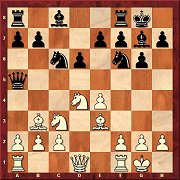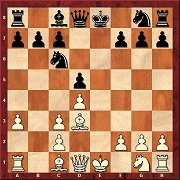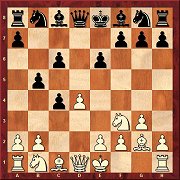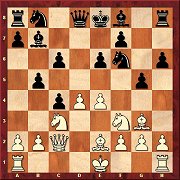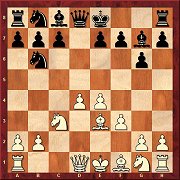 | In his video introduction grandmaster Karten Müller describes all that is there for you on the DVD. Of course he starts off with the world championship. In particular he mentions a few endings between Anand and Gelfand which are well worth looking at - who could hold that against our endgame guru? There is also a titbit for you from the Tal Memorial: Carlsen's brilliant win over Radjabov - in the endgame of course. The grandmaster from Hamburg also gives you a few insights into the openings articles on the DVD and there is a short reference to the opening trap by Rainer Knaak. |
 | Tournament highlights The most spectacular moments and the most important games are presented to you by Dorian Rogozenco in his highlights video. The Romanian grandmaster shares with you his very personal view of the Anand-Gelfand world championship. He shows the complete 8th game and gives you insights into the 9th and 12th games. The second main topic of his video is the Tal Memorial in Moscow. Here he was impressed above all by the creative performance of Alexander Morozevich and you will get a glimpse into bits of the games against Aronian and Carlsen. |
| 11.05.-30.05.2012 
Vishy Anand
defends the title
| World Championship Moscow 2012 The WCh match between world champion Anand and challenger Gelfand was not able to meet all expectations. But the tension which was palpable in so many of the games remained in the duel right till the very last game of the tiebreak. There victory finally went in the decisive second game not necessarily to the better but to the quicker player. In an ending in which Gelfand would certainly have held the draw at normal thinking time, Anand forced his opponent into the decisive error on account of the latter's shortage of time. |
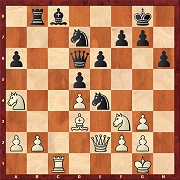
Gelfand,B - Anand,V (7)
Position before 23.Qc2
| In the whole match the challenger could only manage a single victory over the world champion. In game 7 and in his fourth tussle with Anand's Semi-Slav, Gelfand turned for the first time to the flexible 7.Qc2 and emerged from the opening with a long-term positional advantage. The main problem in the black position became clearer and clearer as the game went on: it was the black bishop on c8. In the position on the board the world champion reacted to 23.Qc2 with 23...g5, but this pseudo-active thrust did not turn out to be helpful. After 24.Qc7 Qxc7 25.Rxc7 White is already strategically winning. Gelfand himself annotates in detail on the DVD this brilliant game and his exemplary winning technique. Click on the link under the diagram and have a look at the game with Gelfand's analysis. On the DVD you will find all the WCh games annotated for you by various CB Magazine authors. |

All WCh games in video analysis - Anand's second reports!
| Rustam Kasimdzhanov's WCh retrospectives For four years the previous FIDE World Champion Rustam Kasimdzhanov has been working as a second for Vishy Anand. The WCh in Moscow was after Bonn (2008 against Kramnik) and Sofia (2010 against Topalov) the third match in which the Usbek grandmaster stood by the side of the world champion. On the DVD in an almost one and a half hour long interview with André Schulz, Kasimdzhanov looks back over the events and manages to find something new, surprising and enlightening about each of the 16 match games. Only in English! |
| 08.06-18.06.2012 
Magnus Carlsen
So, he does it again
| Moscow Tal Memorial 2012 Only a few days after the finish of the WCh the other members of the world elite also came to Moscow for a test of strength. The Tal Memorial was not only an absolutely top class, but also a fiercely contested tournament with a lot of movement on the leader board. After 5 rounds Morozevich was in front with four points, but after that the public's favourite did not manage to achieve much more. And after the eighth round it was suddenly Caruana who forced his way to the top with a win over Kramnik - "shock", as Caruana writes with a wink in his analysis below. But finally it was once more Carlsen, with his tenacious and sometimes risky play, who was rewarded with another tournament victory. |

Radjabov,T - Carlsen,M
Position after 29...Ke7-d7
| At the finish Magnus Carlsen remained the only undefeated player, which was remarkable in view of his opening two games - after which he could easily have been left on 0 out of 2. So one somehow felt that it was not an outstanding tournament for the Norwegian, though he had just decided in his favour the strongest tournament of the year! But there is one game which is beyond all doubting and which will be remembered: his victory as Black over Teimour Radjabov. Starting from a completely level position Carlsen gradually outplayed his opponent. And there is even a classic predecessor: Capablanca won with an almost identical pawn structure in 1936. In the diagram Carlsen had just started a king march in the direction of b6, so as to be able to play c6-c5. In the end, just like Capablanca, it was his central pawns which decided the day. |
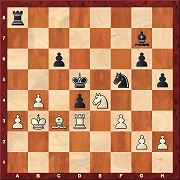
Caruana,F - Kramnik,V
Position after 39.Ne4
| What should an 1.e4-player do when he has to meet Kramnik and does not fancy the Berlin Defence? That was exactly the situation in which Fabiano Caruana found himself in the penultimate of the Moscow tournament and with his Scotch he came up with a small surprise for the ex world champion. It was a good choice because Kramnik was unable to come out of the opening with equality, and also he did not get full compensation for his pawn sacrifice (18...Nd5). The decision arrived soon and in scurrilous circumstances. As Caruana remarks in his analysis, he had just given away his advantage when in the position on the board Kramnik gave away material with 39...Ne3? when in time trouble. Instead, 39...Rxa3+!! and then 40...Kc4 would have offered Black good drawing chances. |

Teimour Radjabov
Two early victories finally sufficed for third place
| In his game analyses Teimour Radjabov looks back over "perhaps the most fantastic tournament in his life". And the super-grandmaster from Azerbaijan made his own contribution to it, right at the start. On the DVD Radjabov has analyses for you his two wins over Tomashevsky and McShane at the very beginning of the tournament. In Radjabov,T - Tomashevsky,E he demonstrates how as White one can get an interesting position with good play in the Scotch in the variation with 4...Bc5 5.Nb3 Bb6 6.Nc3 d6 7.Qe2. In McShane,L - Radjabov,T the English player tried the same setup against the Sicilian with which Anand had been successful only a few days previously in the 2nd tiebreak game of the WCh match - so with 3.Bb5, an exchange on c6 and a later b3. However, the attempt went completely wrong here and was punished by an attack on the king by Radjabov which is worth seeing. |

Openings survey
by Mihail Marin
| What are the new trends in opening theory? What traces did the WCh match leave on the participants in the Tal Memorial? GM Mihail Marin has analysed the games of the elite tournament and in his openings survey he shows you which of Anand's ideas were taken up and what the important innovations and trends are in your favourite variations. |
| 08.06.-18.06.2012 
Dmitry Andreikin
in August he will be playing in his first super-finals
| Andreikin gains qualification for the "Super-finals" Qualification for the Russian Super Championship is earned through what is certainly one of the strongest qualifying tournaments in the world and from time to time new talent suddenly pops up. This year 16 year old Daniil Dubov was for a long time at the top of the table. However, victory finally went to Dmitry Andreikin with 7.5 out of 11. This performance gives him - and also Dubov, Vitiugov, Potkin and Sjugirov - the right to test their skills against the best in the country in the first half of August. Andreikin annotates two of his best games in the tournament for you on the DVD. |

Timofeev,A - Andreikin,D
Position after 20.c4-c5
| A typical King's Indian in which White has his chances on the queenside and Black on the other side of the board. Andreikin met 20.c5! with 20...Raf8! and he writes, "Black burnt his bridges". Despite that, the position is still completely level here, but White under-estimated the danger of Black's kingside attack and went forward with his queen to c7 (21.cxd6 cxd6 22.Qc7?); after 22...Bc8 rueful retreat would have been the only chance - the queen is needed in defence and the correct defence to 23...Qh5! would be 24.Qd1. After 23.Rxa7? Andreikin won in good style. |
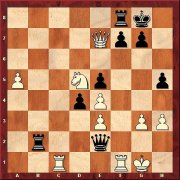
Adamek,J - Sochorova,P
White to move. A win or a loss? (Solution in the tactics column)
| From the opening trap to the endgame study Training in ChessBase Magazine begins with the very first moves and deals with all the phases of a game of chess. The 13 up-to-date openings articles with ideas and suggestions for your repertoire can be found above in the links. This time Rainer Knaak’s Opening Trap (including its Fritztrainer video) contains a trap in the Sicilian (B80). You will also find in video format openings articles by Adrian Mikhalchishin (Slav with 4...a6), Leonid Kritz (Ruy Lopez Main Line with the unusual 10...d5!?) and Robert Ris (King’s Gambit with 2...Bc5). You will find these videos in the column Opening videos. Daniel King's long-running Move by Move deals with a game in the Exchange Variation of the Orthodox Queen's Gambit. And in the Tactics (theme: the knight as lifeguard and angel of death) and Endgame (theme: passed pawns must be pushed) columns Oliver Reeh and Karsten Müller have once more brought together for you the best from recent tournament practice. |



















